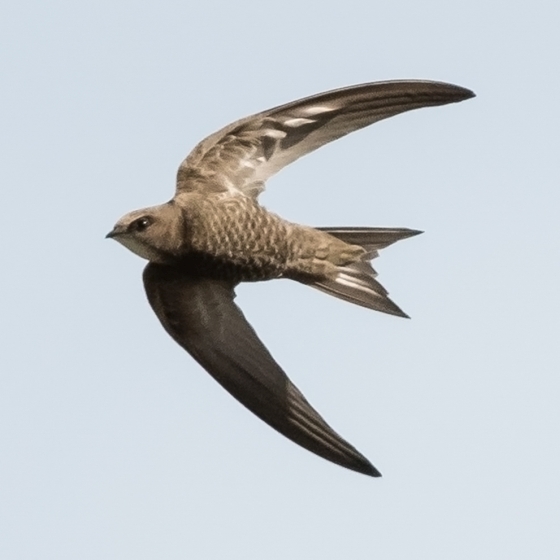Pallid Swift

Introduction
Difficult to distinguish from Common Swift, this is a rare visitor to Britain perhaps because it is a short-distance migrant breeding from the Mediterranean to Persian Gulf and wintering in the Sahel (and possibly Pakistan in the case of eastern populations).

Key Stats
Status and Trends
Conservation Status
Population Size
Population Change
Population trends of this scarce species are not routinely monitored.
Distribution
This species is a rare vagrant and was recorded during Bird Atlas 2007–11 as shown on the map.
Occupied 10-km squares in UK
or view it on Bird Atlas Mapstore.
European Distribution Map
Distribution Change
This vagrant is too rarely reported to map distribution change.
Seasonality
This species has been too rarely reported to BirdTrack during 2011–22 to properly assess seasonality.
Movement
Britain & Ireland movement
Biology
Survival and Longevity
Survival is shown as the proportion of birds surviving from one year to the next and is derived from bird ringing data. It can also be used to estimate how long birds typically live.
Classification, names and codes
Classification and Codes
- Order: Apodiformes
- Family: Apodidae
- Scientific name: Apus pallidus
- Authority: Shelley, 1870
- BTO 2-letter code: II
- BTO 5-letter code: PALSW
- Euring code number: 7960
Alternate species names
- Catalan: falciot pàl·lid
- Czech: rorýs šedohnedý
- Danish: Gråsejler
- Dutch: Vale Gierzwaluw
- Estonian: randpiiritaja e. rand-piirpääsuke
- Finnish: vaaleakiitäjä
- French: Martinet pâle
- German: Fahlsegler
- Hungarian: halvány sarlósfecske
- Icelandic: Fölsvölungur
- Irish: Gabhlán Bánlíoch
- Italian: Rondone pallido
- Latvian: bala svire
- Lithuanian: blyškusis ciurlys
- Norwegian: Gråseiler
- Polish: jerzyk blady
- Portuguese: andorinhão-pálido
- Slovak: dáždovník plavý
- Slovenian: bledi hudournik
- Spanish: Vencejo pálido
- Swedish: blek tornseglare
- Welsh: Coblyn Gwelw

